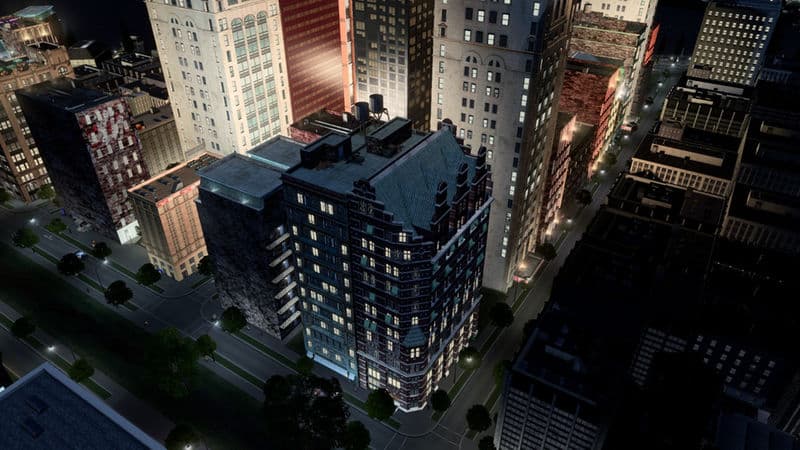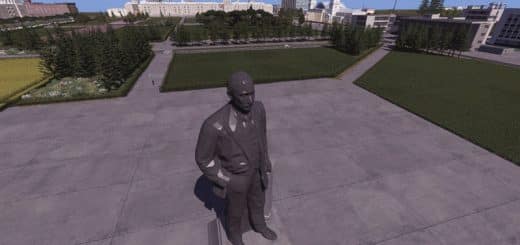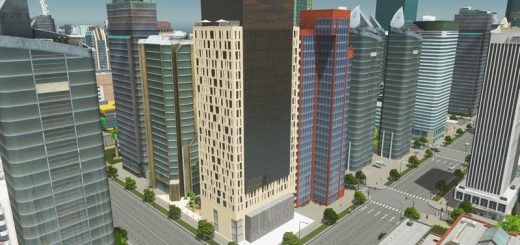
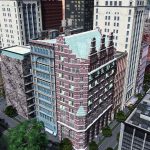
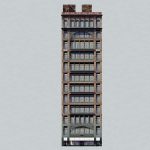
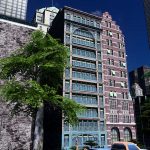
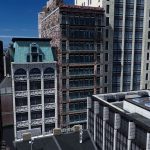
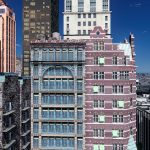
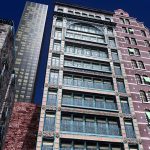
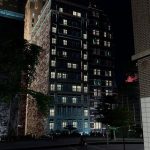
Little Singer building 561-3 Broadway (2×4 high comm)
Please leave a vote if you download! This is a 2×4 high commercial lvl 3 building based on the The Little Singer Building in New York, at Broadway. You will need a lvl 1 and 2 of the same size in your building theme
About the model
I decided to look for a different kind of wall2wall building than the typical Nouveaux Art buildings you will find in New York of this era. This one certainly catched my eye. However the copper plating on this building was hard to make right.
The texture was a pain in the ♥♥♥, as there no clear pictures of the top of the model.
This model has about 1900 tris and a 2048×1024 texture, with a diffuse, shadow, normal, illumination and specularmap.This model has a custom LoD, which is about 184 tris with a 512×256 texture, with a diffuse, specular, normal and illumination map.
About the building
Ernest Flagg, a Beaux-Arts trained New York architect designed the “Little Singer Building” in 1902. Its construction began in the spring of 1903, five years before he would create the Singer Tower that for a short time was the world’s tallest building. The tower came down in 1967, but fortunately the Singer Loft Building at 561 Broadway survived. Since 1979, it has been a co-op with an unusual mixture of residential and commercial uses: 20 offices and 15 live/work units for artists. The co-op, known as the Singer Studio Corporation, has, for many years, had as its president, a savvy architect, named Joseph Levine.
The Broadway facade of the Little Singer is a twelve story charmer. Flagg employed red brick, steel, reddish terra cotta and glass to frame the elegant facade, which has a nine story recessed central bay five windows wide. Arching over this bay is a flourish of incredibly ornate wrought iron tracery. The second floor displays a similar tracery arch. The attic level is surmounted by an extremely ornate roof cornice held on intricately curved iron brackets.
The airy look of the Little Singer derives from its very wide windows together with the lacy strip balconies across each level. These balconies have delicate wrought iron railings, sophisticated in design and varying from floor to floor. Over the years beginning in 1983, the aging one–time factory was restored by the co-op. This included repainting the decorative ironwork the same deep green color that Flagg had used in 1903. The spacious ground floor has for the last eight years been occupied by Kate’s Paperie.
Actually, the Little Singer Building, said to be structurally Flagg’s most inventive achievement, is an L–shaped structure which has a 37–foot wide iron–trimmed facade at 88 Prince Street similar to the 50–foot facade on Broadway. This facade has similar decorative iron work which at the second level includes large iron letters spelling out “Singer Manufacturing Company”.
Built to house offices and factory space for the Singer Manufacturing Company, this office building was the smaller relative of the company’s 41-story headquarters located in the financial district. Both were designed by Flagg, and the latter was completed in 1908. In an innovative way, Flagg manipulated various building materials in favor at the time. The architect combined large glass panes, pigmented terra-cotta panels, wrought-iron balconies and cast-iron ornament to create an intricate cladding for the building’s steel skeleton frame. Suspended from a structural frame, this highly ornamented facade is the forerunner of the glass curtain walls found in post-World War II skyscrapers.

